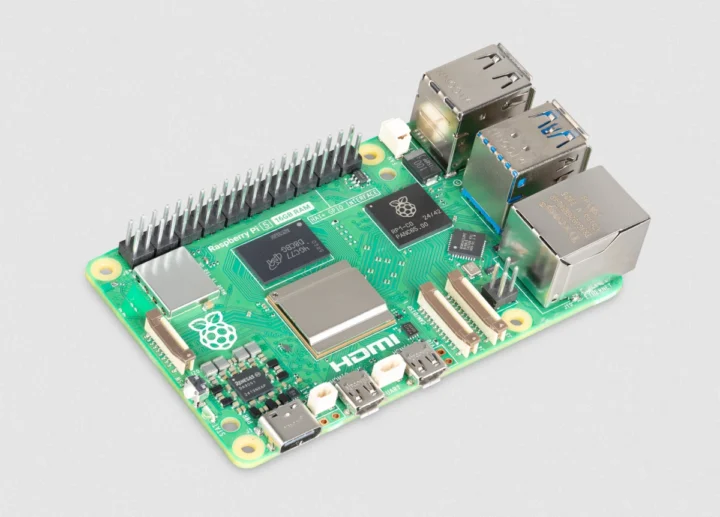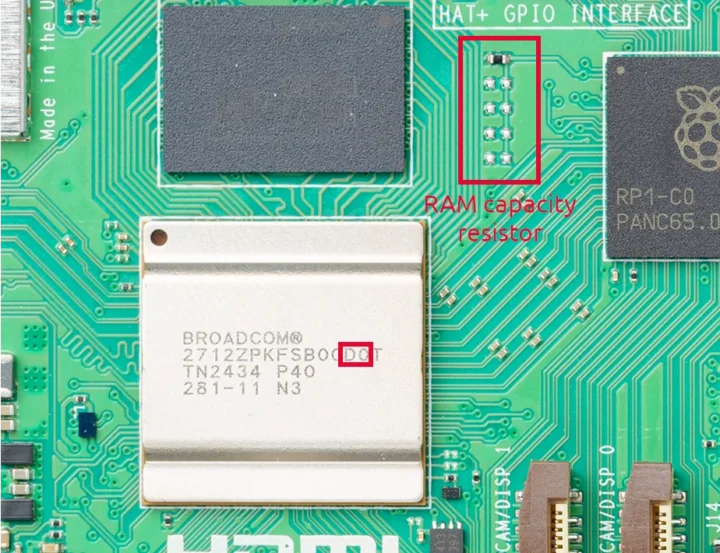Considering the Raspberry Pi CM5 is available with up to 16GB RAM, it should come as no surprise that the Raspberry Pi 5 also got its own 16GB LPDDR4 RAM upgrade. But the extra memory does come at a premium since the new board sells for $120, a $40 markup compared to the Raspberry Pi 5 with 8GB RAM.
The extra memory should bring the user experience closer to a desktop machine for browsing the web with multiple tabs, checking emails, watching YouTube videos, and more all at the same time. Besides multitasking, the 16GB RAM may also be beneficial when running generative AI workloads like LLMs and VLMs which are known to be memory-hungry.
Raspberry Pi 5 16GB specifications:
- SoC – Broadcom BCM2712 “D0” stepping
- CPU – Quad-core Arm Cortex-A76 processor @ 2.4 GHz with crypto extensions, 512KB per-core L2 caches, 2MB shared L3 cache
- GPU – VideoCore VII GPU @ 800 MHz with support for OpenGL ES 3.1, Vulkan 1.2, 4Kp60 HEVC decoder
- System Memory – 16GB LPDDR4X-4267 SDRAM
- Storage – MicroSD card slot with support for high-speed SDR104 mode
- Video Output/Input
- 2x HDMI port up to 4Kp60 with HDR support
- 2x 4-lane MIPI camera/display transceivers
- Networking
- Gigabit Ethernet RJ45 port via Broadcom BCM54213PE transceiver; optional PoE+ support through Raspberry Pi PoE+ HAT
- Dual-band 802.11ac Wi-Fi 5
- Bluetooth 5.0 / Bluetooth Low Energy (BLE)
- USB – 2x USB 3.0 ports supporting simultaneous 5Gbps operation, 2x USB 2.0 ports
- Expansion
- 40-pin Raspberry Pi GPIO header
- PCIe 2.0/3.0 x1 FFC interface
- Misc – Real-time clock (RTC) powered from an external battery, power button, UART debug connector
- Power Supply – 5V/5A DC power via USB-C, with Power Delivery support
- Dimensions – 85 x 56 mm
As far as I can tell, the only difference is the RAM capacity. When I reviewed the Raspberry Pi 5 with 2GB RAM and compared it to the model with 8GB, I noted a lower power consumption which ended up being because of the BCM2712D0 SoC being used instead of the BCM2712C1. Based on the photo provided by Raspberry Pi, the new 16GB model relies on the D0 processor, so the power consumption should be similar or very slightly higher due to the higher memory capacity. The silkscreen appears to be changed too since the area used to select the RAM capacity with a resistor has no markings.
I haven’t asked for a review sample because the performance reported by benchmarks will be the same. If you are already happy with a Raspberry Pi 8GB, there’s really no reason to upgrade. But if you encounter frequent out-of-memory (OOM) messages or performance degradation due to swapping, switching to 16GB may make a big difference.

Jean-Luc started CNX Software in 2010 as a part-time endeavor, before quitting his job as a software engineering manager, and starting to write daily news, and reviews full time later in 2011.
Support CNX Software! Donate via cryptocurrencies, become a Patron on Patreon, or purchase goods on Amazon or Aliexpress






